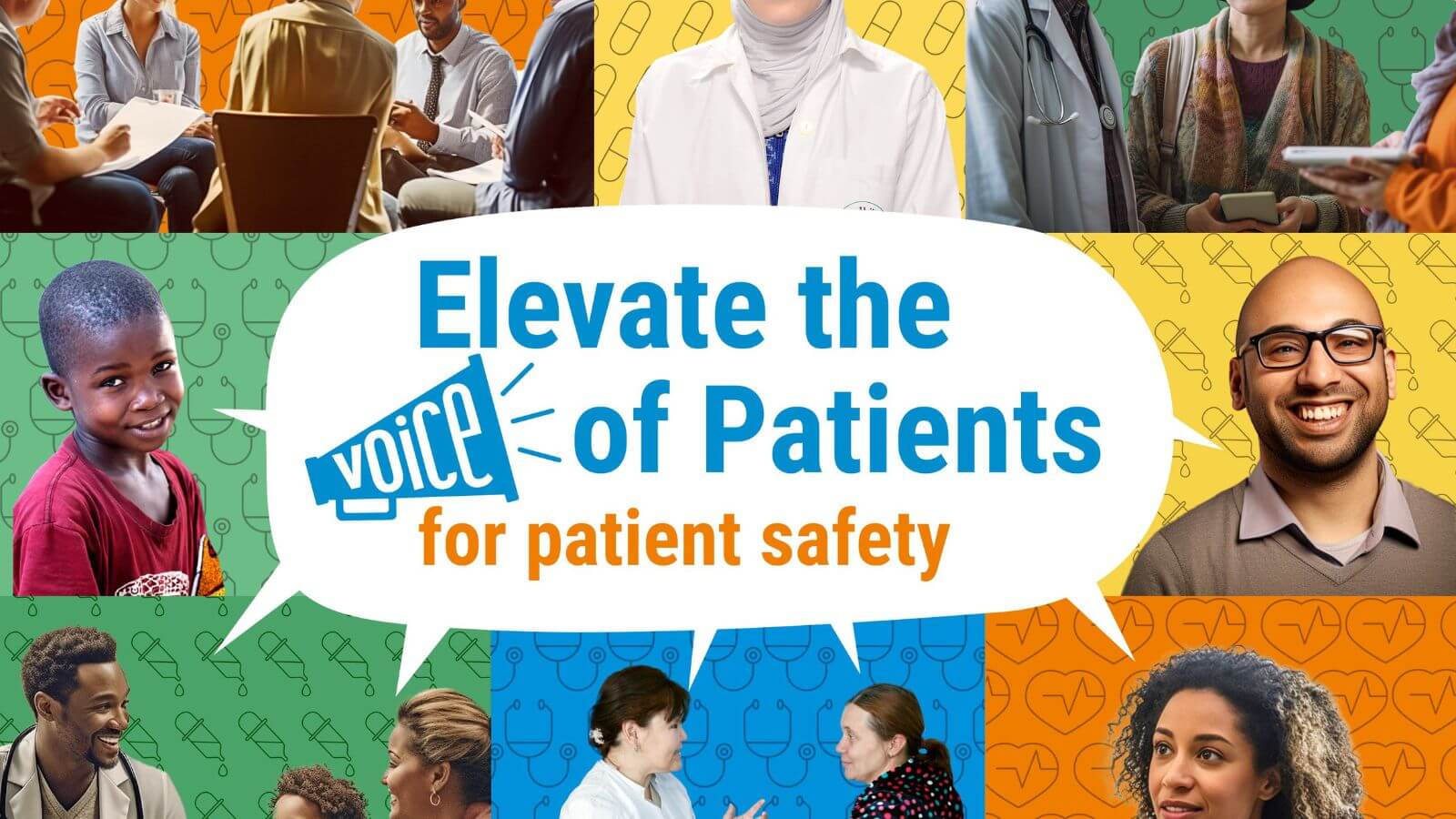For the fifth annual World Patient Safety Day this September, organised by the World Health Organisation (WHO), the importance of this year’s theme—‘Engaging patients for patient safety’—is starkly evident. The urgency for patient and family engagement is especially vital in preventing misdiagnoses of severe conditions like aortic dissection, which can result in fatal outcomes if not accurately identified and promptly treated.
The four key themes of patient safety as outlined by Patient Safety Learning, serve as a framework for understanding the opportunities and challenges in engaging patients for enhanced aortic disease safety.
Elevating the Voice of Patients and Families
The charity is committed to making a tangible difference by ensuring that those with lived experience of AD are not just heard, but actively involved in every aspect of healthcare safety. In collaboration with healthcare providers, policymakers, and professional societies, we are working to inform the design of healthcare systems around the real needs of patients. By integrating these voices into the decision-making process, the AD community is making meaningful changes that are benefiting healthcare safety, both locally and globally.
Shared Decision-Making at the Point of Care
Working together on health choices is the first step in getting patients involved. However, when it comes to conditions as urgent as aortic dissection, medical professionals often find themselves in the driver’s seat, making quick decisions based on their assessments. Herein lies the risk of misdiagnosis, particularly if there is a lack of clinical guidance or specialised pathways. Trusts within England and other healthcare systems worldwide should be made aware of the necessity to have a defined pathway for diagnosing aortic dissection, which should mandate tests like CT scans for high-risk patients.

Engaging Patients When Things Go Wrong
When misdiagnosis occurs, the healthcare system often fails to engage patients and families effectively. Patients and families who have suffered due to a missed diagnosis of aortic dissection frequently face barriers in obtaining information and remedial support. Therefore, it’s imperative that NHS Trusts work to handle these unfortunate situations with transparency, engaging the patients and their families to prevent future mistakes.
Engaging Patients for System Improvement
The Healthcare Safety Investigation Branch published a concerning report in 2020 highlighting the risks of delayed recognition of acute aortic dissection. Lessons must be learnt at the systemic level. Patients and families can provide valuable insights into the lived experience of these failures, contributing to more effective safety protocols. These firsthand accounts should be incorporated into standard operating procedures and educational initiatives to improve diagnostics and patient outcomes.
Patients as Advocates and Campaigners
Given the complexity and urgency associated with conditions like aortic dissection, patients and their families can serve as strong advocates for safety improvements. They can join forces with organisations working on patient safety to ensure that healthcare providers are well-equipped and well-educated to diagnose these conditions promptly and accurately.
Lessons from Chloe’s Tragic Case

In light of this, the case of Chloe serves as a sombre example of the fatal consequences that can occur when there is a breakdown in patient engagement.
Chloe, 24, was at high risk for aortic dissection due to her genetic history. Despite presenting alarming symptoms at the A&E department, her condition was misdiagnosed. A subsequent call to the hospital resulted in no further action, and Chloe tragically died four days later. Investigations confirmed that the hospital’s lack of correct diagnosis was a missed opportunity that could have saved her life.
The Coroner’s Concerns
The Coroner’s report paints an alarming picture of the gaps in patient safety protocols at the Hospital. The Coroner expressed grave concerns about the absence of a clear clinical guidance or pathway in the hospital’s Emergency Department for handling cases of suspected aortic dissection. One critical directive that was lacking was the mandate for a CT scan to rule out the condition. This illustrates a systemic failure at the point of care. The Coroner further stated that to prevent future deaths like Chloe’s, all Trusts within England should be made aware of the circumstances of her case.
Previous Cases and Ongoing Concerns
Chloe’s case is not an isolated incident. In 2021, a Coroner’s report on the death of Paul Satori, who also died due to a dissecting aortic aneurysm following a misdiagnosis, raised similar concerns. These repeated cases underline the need for improved guidelines and awareness at emergency departments, as also noted by the Healthcare Safety Investigation Branch in an earlier 2020 report.
Personal Pain, Public Impact
Chloe’s tragic story has found a significant platform for impact and change through her husband’s collaboration with the charity. Billy has been given the opportunity to speak at the Royal College of Emergency Medicine’s RCEM Learning Aortic Dissection Study Day. His involvement has provided a unique and deeply personal perspective to medical professionals about the potentially fatal consequences of misdiagnosis.
Moreover, the Aortic Dissection Charitable Trust has been actively collaborating with the Coroners’ Society of England & Wales. This partnership is working to educate coroners on the intricacies of aortic dissection, thereby improving the accuracy in recording causes of death related to this condition. The charity is also focused on supporting NHS Trusts by helping to implement dedicated education to improve their diagnostic and treatment processes for suspected aortic dissections. This multi-faceted approach aims to create a more reliable safety net for patients and significantly reduce the number of preventable deaths related to aortic dissection.
Building a Partnership in Care
Chloe’s tragic story underlines the importance of each of the key themes outlined for World Patient Safety Day. From the point of care to when things go wrong, from system improvement to advocacy, the patient’s role is not just as a recipient of healthcare but as an active participant. Policy improvements need to focus on making the patient an active partner in their healthcare journey, as supported by the objectives of World Patient Safety Day 2023.




